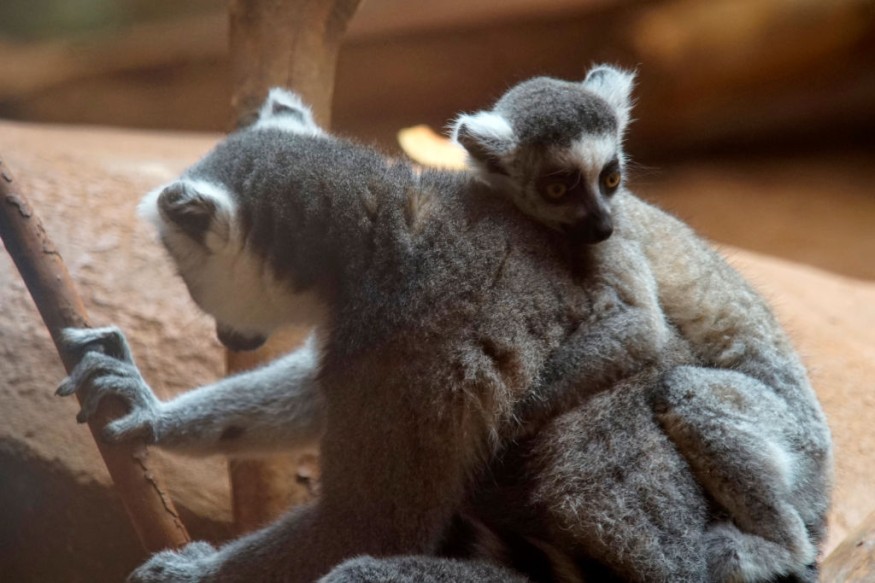One of the largest lemurs ever existed was a heavy animal weighing about as much as an adult human. It turns out the behemoth got its gigantic size by eating leaves, an analysis of its genome specified.
Koala lemurs or Megaladapis edwardswi, according to a Live Science report, measured up to five feet in length and roughly 187 pounds in length and were one of roughly 17 giant lemur species that once lived on Madagascar.
Nevertheless, ancient DNA usually does not preserve well in tropical and non-tropical climates; quite small genetic information about these massive, extinct lemurs has stayed alive until to date.
Scientists recently hit the DNA jackpot, though, after they analyzed hundreds of bones from extinct lemurs. They identified a koala lemur jawbone dated back to 1,475 years old but still had viable genetic material. This allowed the study authors to search for a new place for the mysterious giant on the lemur family tree.

Leaf-EatingKoala Lemurs
All lemurs, a BBC report specified, both existing and extinct, are part of the primate family, including great apes, monkeys, humans, and humans' extinct relatives like the Neanderthals.
According to the Duke Lemur Center in Durham, North Carolina, the common name "Koala lemurs" references koalas, which are not primates but marsupials instead, as they have similar bodies, specifically with long arms, short legs, and big feet for grasping tree trunks and branches.
Researchers suspected previously that giant, tree-dwelling koala lemurs were leaf-eaters as animals specializing in leafy diets usually have bigger bodies than those with relatives that have more varied diets, said Stephanie Marciniak, the lead study author and postdoctoral scholar in the Department of Anthropology at Penn State University.
Essentially, there are over 100 lemur species on Madagascar presently, although the biggest lemur vanished between 500 and 2,000 years ago.
Marciniak said it was the large-bodied species that largely turned extinct instead of smaller species that existed simultaneously.
The habitants that the giant lemurs were adjusted to possibly changed significantly, affecting their ability to survive.
Koala Lemur Jawbone Studied
For this new research, Evolutionary and phylogenetic insights from a nuclear genome sequence of the extinct, giant, "subfossil" koala lemur Megaladapis edwardsi, published in the Proceedings of the National Academy of Sciences, the authors sampled DNA from the koala lemur jawbone.
Since the preservation of the jawbone was so good, the researchers were able to perform nuclear genomic analysis, reconstructing the genome of the koala lemur from DNA in the cell's nucleus, which provides genetic data from both parents.
Essentially, Mitochondria DNA, by comparison, at times is preserved when the nucleus of a cell is not, although such DNA contains genetic information only from the mother.
The nuclear genome comprises thousands of independent markers of ancestry compared to the mitochondrial genome, so it is well-suited to ultimately address the link of Megaladapis to other lemurs, explained Marciniak.
Skeletal and Dental Characteristics
The researchers then compared the koala lemur DNA to modern lemurs, which include two species occupying different branches on the lemur family tree: Eulemur rufifrons or red-fronted, as described in the Duke Lemur Center site, and Lepilemur mustelinus or weasel lemurs.
Earlier evaluation of the skulls of koala lemurs and teeth suggested that koala lemurs were close relatives of weasel lemurs.
Nevertheless, newly discovered data showed a different story, placing the extinct giant nearer the red-fronted lemurs.
Meaning, explained Marciniak, the similarity in skeletal and dental characteristics between Megaladapis and Lepilemur are a possible part of their adjustments to a similar diet, not to mention ecological habitat or pressure.
Related information about lemur is shown on King Lion's YouTube video below:
RELATED ARTICLE : Endangered Philippine Monkey-Eating Eagle Hatches Chick in Captivity
Check out more news and information on Animals in Science Times.
© 2025 ScienceTimes.com All rights reserved. Do not reproduce without permission. The window to the world of Science Times.











